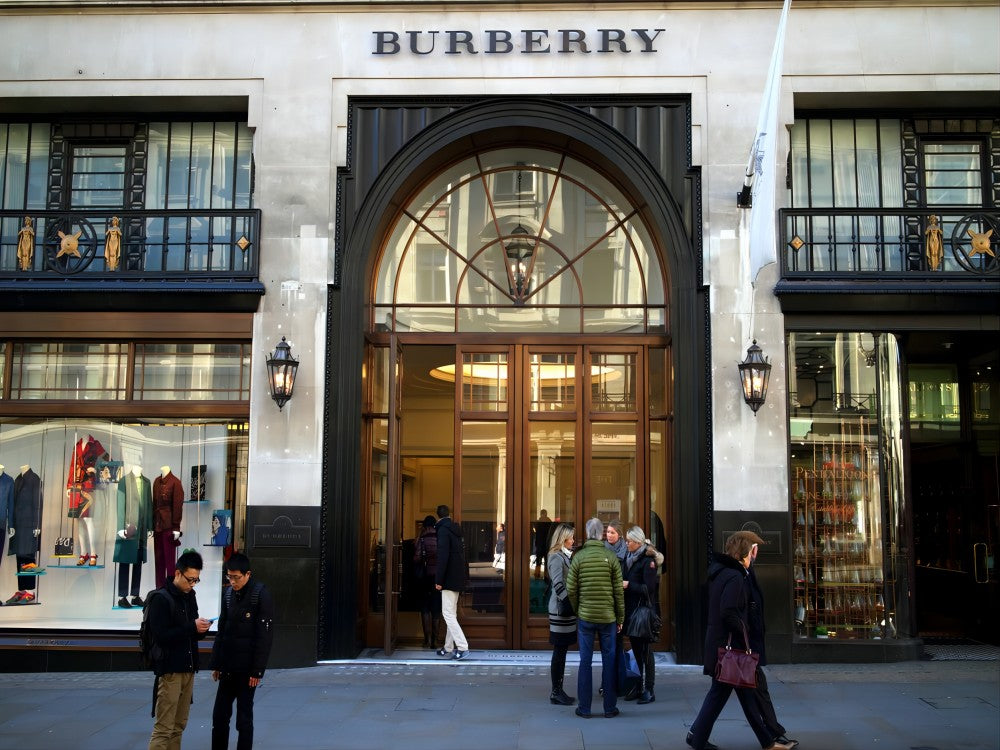Why Burberry Wanna Change CEO Once More?

According to sources cited by Miss Tweed, Burberry, the British luxury brand, is considering replacing its current CEO, Jonathan Akeroyd. Chairman Gerry Murphy has already interviewed candidates for the position, sparking industry buzz.
However, analysts believe that this intention is somewhat premature. Akeroyd has been at the helm of Burberry for less than two years, since April 2022.
The financial report indicates that Burberry's reasons for rushing to replace him are significant.
For the fiscal year 2024 as of March 30, Burberry is expected to record a single-digit decline in sales. Adjusted operating profit is forecasted to be between 410 million and 460 million pounds, lower than the previously expected 552 million pounds to 668 million pounds.
As a result, Burberry's share price plummeted 12% on the same day, and its market value hit a three-year low. As of the time of publication, Burberry's share price has fallen by almost 53% compared to its historical high in April of last year, resulting in a current market value of only £4.47 billion.
In contrast, while luxury brands such as Louis Vuitton, Chanel, Dior, and Prada have recorded double-digit sales increases in 2021 and 2022, Burberry has not experienced the same growth. Dior's market size has tripled in seven years.
Burberry's lack of growth is not due to industry trends.
In 2022, Burberry launched a comprehensive brand transformation strategy, which began with the appointment of Akeroyd as CEO. A year after, Burberry appointed Kate Ferry as Chief Financial Officer and Executive Director.
Along with the restructuring of its executive team, Burberry's most talked-about change in the last two years has been the hiring of renowned creative director Daniel Lee.
The market perceived Burberry's design style as its major issue at the time. Burberry has moved away from its British roots and classic elegance, embracing street style to appeal to a more elite market. However, this strategy has not been successful in attracting young consumers, resulting in a loss of core customers.
Despite mixed opinions about Lee's work, he has successfully brought Burberry back into the public eye as a British brand.
A series of marketing campaigns enabled consumers to quickly perceive Burberry's shift in an era of information overload. However, the Britishness was not balanced by the creative pull of the show's styling to meet the market's expectations.
Lee's expression of British culture has not yet been aligned with the management's perception, making it difficult to resonate with the market.
The management criticized him for overemphasizing the underground cultural temperament, so in the following two collections, Lee restrained the expression of diversity and subculture. This resulted in the plaid being presented as contemporary elitism, which disappointed many fashion critics.
Some analysts have suggested that Lee's compromises may have contributed to the lackluster results at Burberry at the end of last year. It is believed that his first collection did not perform as well in stores as expected.
The new presentations at the shows were initially questioned by the public before being tested at retail.
If the rumours of a CEO change are true, it may indicate that the luxury brand's sword is rarely wielded at the management level, rather than at the creative director. Historically, the board has favoured the former.
However, it has been argued that a CEO change won't alter the status quo at Burberry, as Akeroyd is merely an intermediary between the board and the brand. Burberry's structural problem of management overreach essentially stems from the board.
Burberry's struggle to turn itself around cannot be attributed to the business decisions of a CEO or the design style of a creative director. Rather, it is due to the board of directors who operate behind the scenes.
Out of Burberry's 13 listed board members, only two have a background in the fashion industry. This lack of experience in the luxury sector has resulted in the board's focus on short-term gains and tangible assets, rather than the intangible aspects that are critical to the brand.
Some analysts suggest that Burberry could improve its situation by changing its ownership structure and becoming a private company. The board may need to take drastic action, such as replacing the current CEO.



















